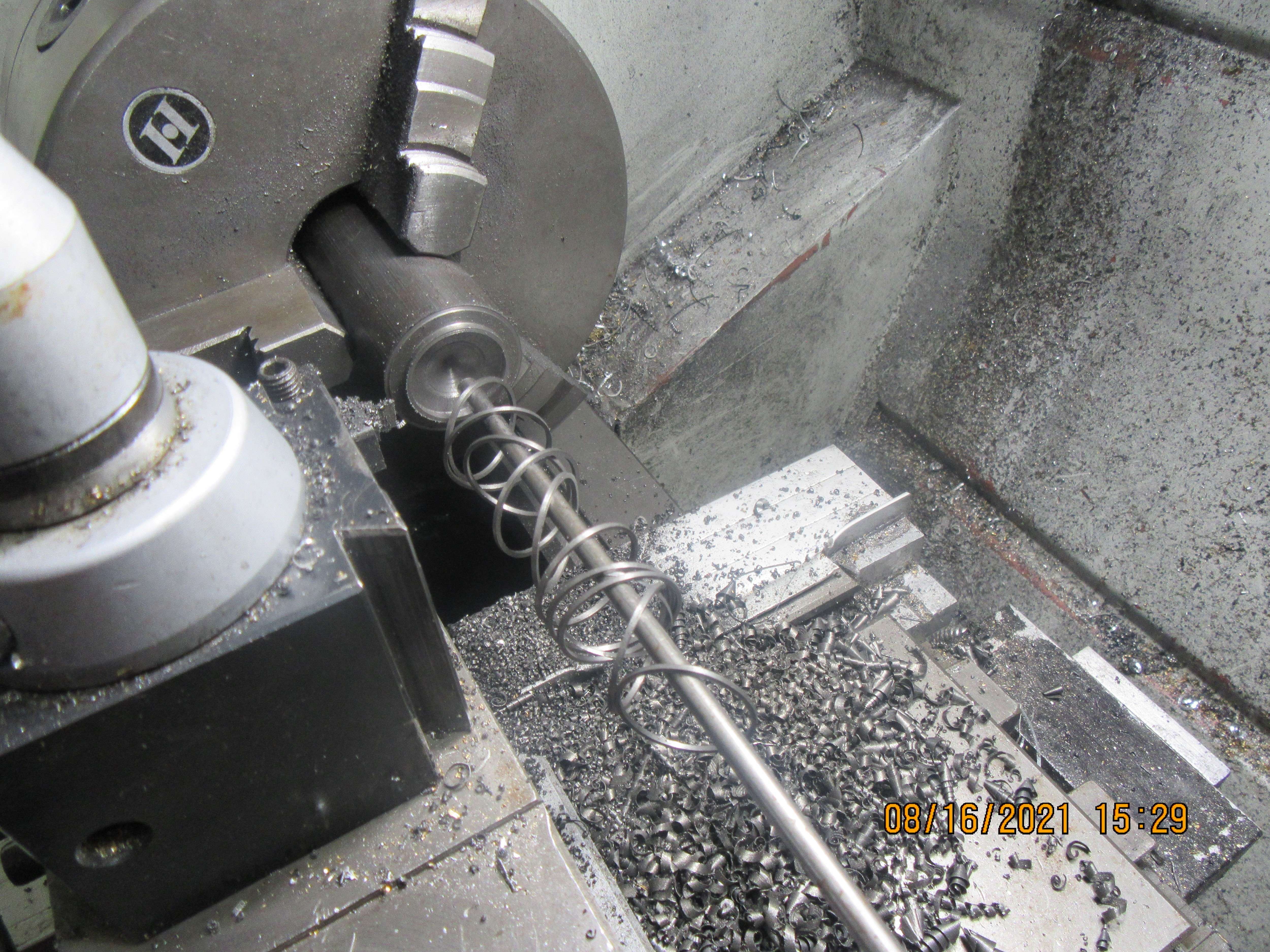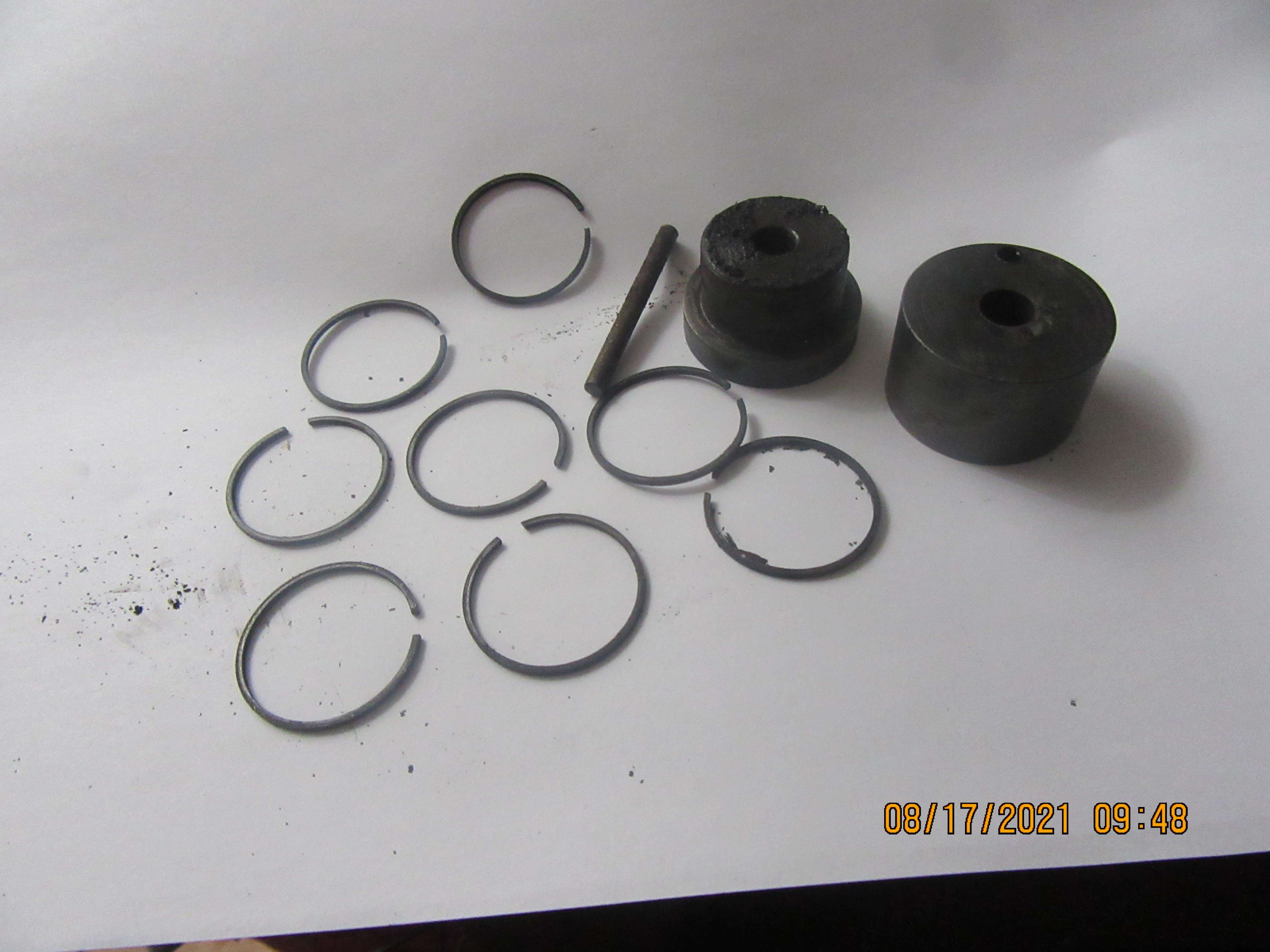Okay, here's what we've got going. Thats a piece of 1 3/8" diameter grey cast iron in the chuck. The o.d. is turned down to the diameter of the cylinder, not the piston. My rings are going to be .038" (1 mm) thick radially so the inside is drilled out to 0.925" diameter. The o.d of what will become the rings is polished with a fine whet stone, or a piece of 400 grit paper backed up by a file or piece of flat-bar. This time my rings are going to be 0.045" thick, and my specially ground cut off tool is 0.038" wide, so .045 plus .038 plus .003" to have a bit extra length equals 0.086", so thats how far I advance the carriage before taking another cut. The rod held in the tailstock chuck is something to catch the rings as they are parted off. I have to remember that each time I cut a ring off, I have to deburr the outside and inside diameter of the piece held in the chuck, so that at least one side of the ring is deburred.---It is remarkably easy to forget that step. Each ring will now be measured with my micrometer to make sure it is the right thickness, and then held in a fixture with a 0.020" deep x 1" diameter recess. It is then slid around in a figure 8 on a piece of 600 grit paper until it reaches the magic 0.045" thickness. Then it is fitted into the piston ring groove to make sure that it actually will go down to the bottom of the groove. My chuck has about 0.003" total indicated runout, so I cut off a bunch of rings while in this set up, because if I take that piece of round stock out of the chuck, I will never get it back in the same spot, and I don't want to make rings that are not truly concentric.















































